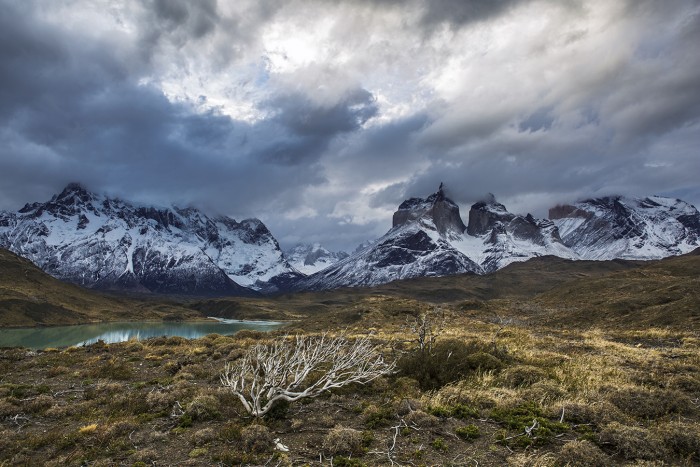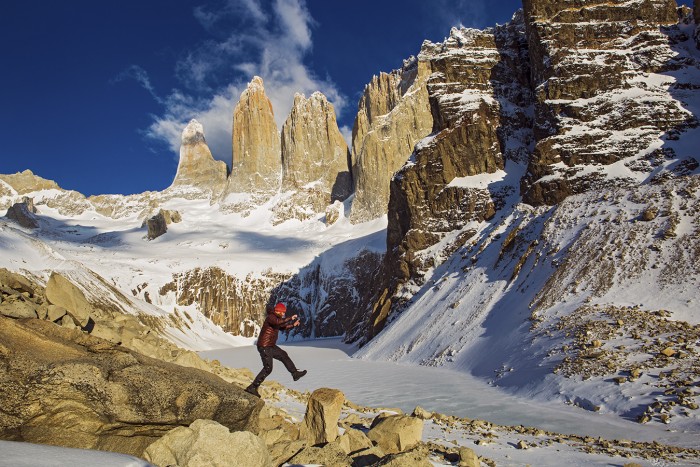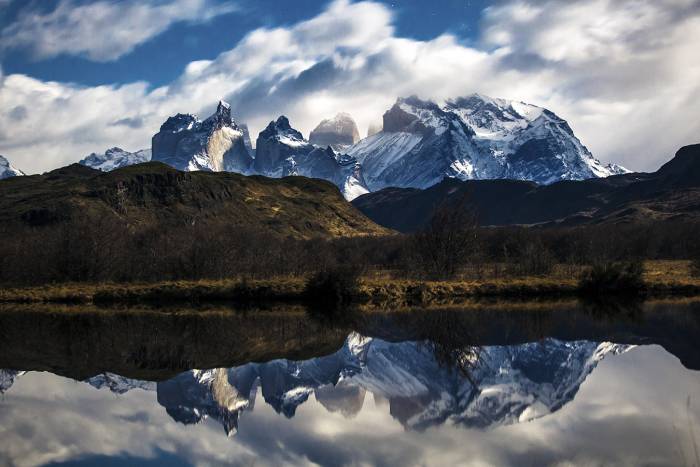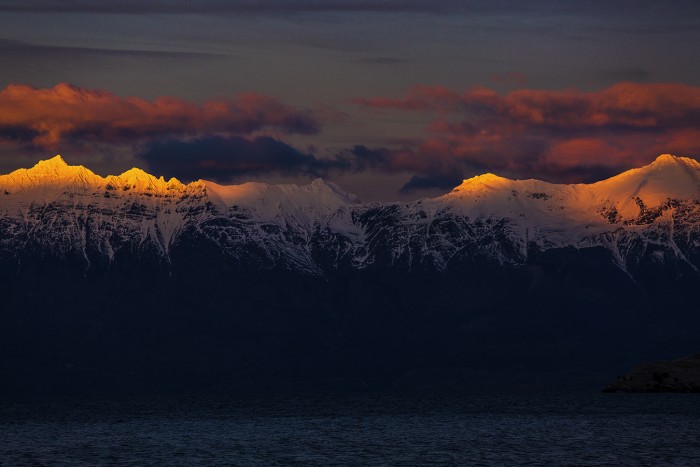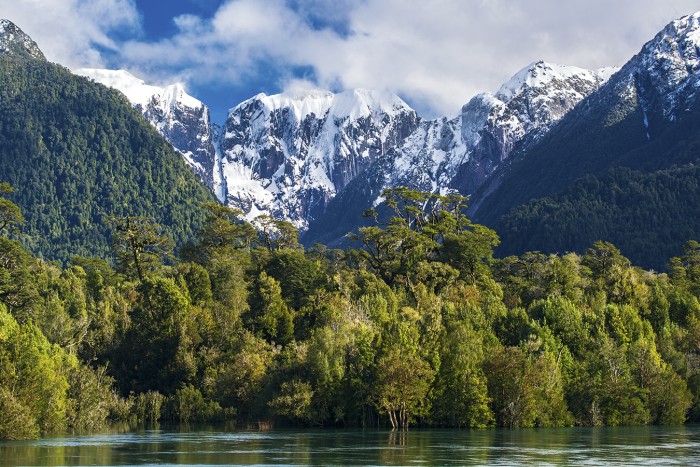[leadin]Patagonia, the southern portion of Argentina and Chile, is famous for its absurdly beautiful landscapes and ferocious weather. When I set off to explore Patagonia in the heart of winter (which is summer in North America), I had no idea what I would discover.[/leadin]
I had visions of roads washed out, brutal winds that would whisk my tent away (with me in it), ice-encrusted landscapes and dwellings a la Day After Tomorrow, and a constant struggle for survival. After a month of camping, trekking, and driving more than 1,000 miles through Patagonia, here’s what I’ve learned.

People actually live down here.
There are towns, villages, and roads, all the way to the bottom of the continent. My image of life not being sustainable year-round through this harsh landscape was completely wrong. The Patagonian lifestyle is unique and hearty, but life hums along in the far south nonetheless.
But there’s a lot of wilderness.
Outside of the pockets of civilization, the landscapes are incredible, beautiful, harsh, and devoid of people. Getting roads to some parts of Patagonia is currently impossible. Boats and ferries are the only way to get around in some places. One day I drove more than 400 miles and saw only a handful of cars on the road.
The tourists are gone.
One lady’s first reaction when she saw me was “What are you doing here?” And then told me I was the fifth gringo she had seen this time of year… in 30+ years of running a small lodge in deep Patagonia.
The wind! Oh my God the wind!
Patagonia is notorious for its extreme weather. But it’s not the temperature or the precipitation that makes the weather wild, it’ the wind. Here’s an example. I was thinking the winter weather would be even more extreme than the summer. But in fact, it’s the opposite. Winter is known as being the “calm” time of year. The temperatures stay near freezing through the winter, but the winds are not nearly as strong as the summertime gales.
Seriously, the wind!
It’s still Patagonia, and the weather can turn any time. And when the storms do come (and boy did they), the wind was stronger than anything I’ve ever experienced, shaking whole buildings, snapping tent poles and flattening tents to pancakes. There were several storms that rattled me to my core. But in between the storms, the weather was, dare I say, pleasant?
But it’s not that cold.
It’s not actually very cold in Patagonia. It gets below freezing, but not by a lot. Outside of the mountain peaks, there is not much altitude. The surrounding oceans heavily influence the climate and keep the temperatures from plummeting far below freezing. On the Chilean side of Patagonia, rain, not snow, was the dominant weather factor.
Closed for the season.
Almost all of the hostels and managed campgrounds are closed during the winter. This makes traveling trickier in the winter months, but far from impossible. There are still lodging options for travelers. Hospedajes, rooms to rent inside people’s homes, are plentiful and easy to find throughout Patagonia.
Camp with permission.
Almost all of the land in Patagonia is privately owned. Pitching your tent anywhere you please is usually prohibited. But the people are friendly. Asking permission to camp is usually greeted with a smile and an invitation to come sit by the fire and drink maté.
Border crossings closed.
Certain border crossing points between Chile and Argentina are not open in the winter. Most notably, the far southern end of the Carretera Austral at Villa O’Higgins normally has a boat service that transports travelers into Argentina, right into the heart of the most famous portion of Patagonia. This is not an option in the winter, so I had to backtrack and go two days out of my way in order to get to the next most southern border crossing.
Winter Patagonia exploration.
There is a ton to do and explore, all year round. The most famous destinations, such as Torres del Paine and Glaciers National Park, remain open all year. Camping and trekking are absolutely feasible.
Although certain trails, campsites, and remote portions of the parks are closed for the winter, the most well known locations are always open. Even in the most popular locations, there is true solitude to be found.
–Eric Hanson is a landscape and adventure photographer, filmmaker and host of Backpacking TV currently trekking the Andes … indefinitely. Follow him on Instagram, ericrhanson

